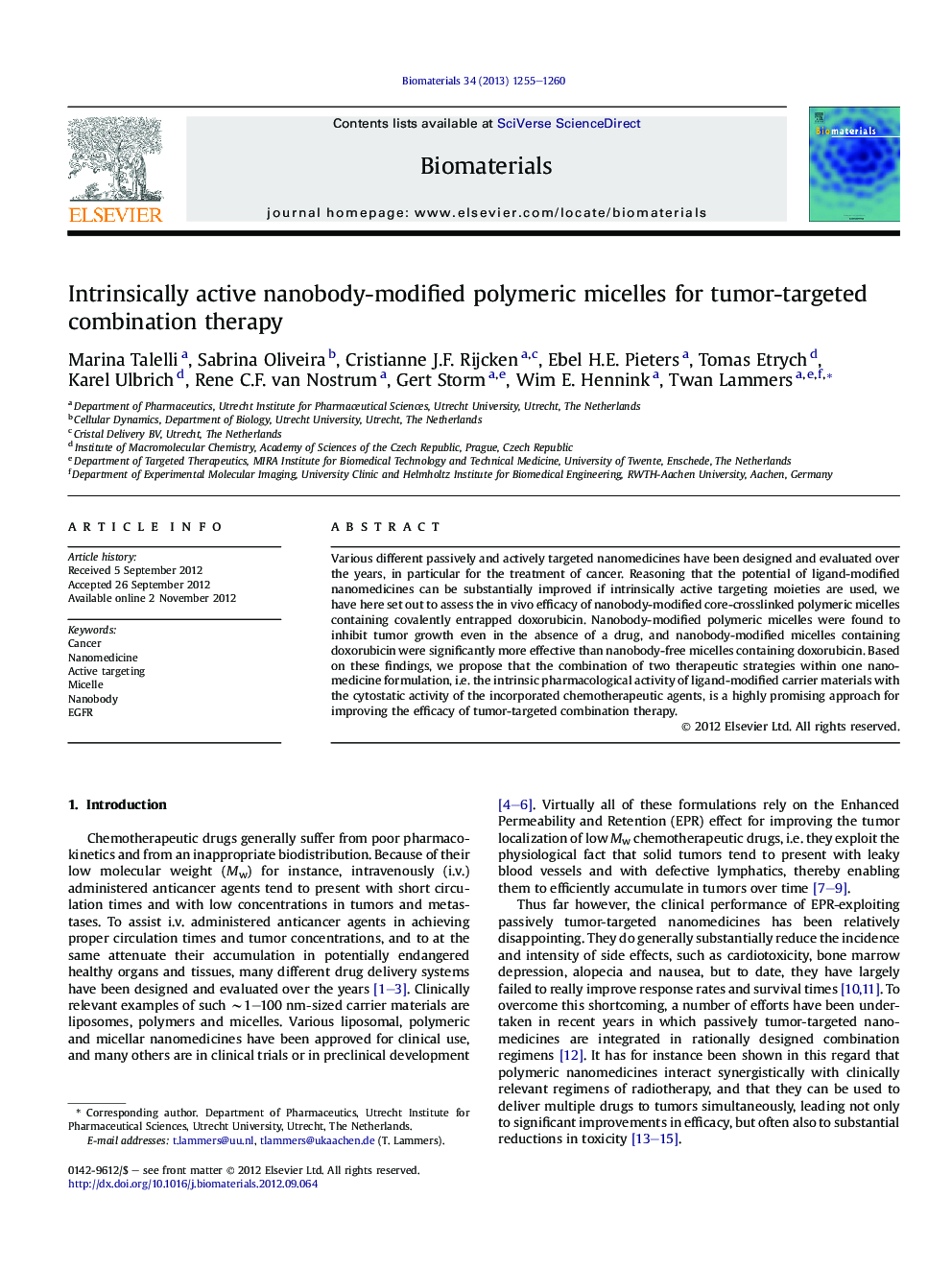| Article ID | Journal | Published Year | Pages | File Type |
|---|---|---|---|---|
| 10229325 | Biomaterials | 2013 | 6 Pages |
Abstract
Various different passively and actively targeted nanomedicines have been designed and evaluated over the years, in particular for the treatment of cancer. Reasoning that the potential of ligand-modified nanomedicines can be substantially improved if intrinsically active targeting moieties are used, we have here set out to assess the in vivo efficacy of nanobody-modified core-crosslinked polymeric micelles containing covalently entrapped doxorubicin. Nanobody-modified polymeric micelles were found to inhibit tumor growth even in the absence of a drug, and nanobody-modified micelles containing doxorubicin were significantly more effective than nanobody-free micelles containing doxorubicin. Based on these findings, we propose that the combination of two therapeutic strategies within one nanomedicine formulation, i.e. the intrinsic pharmacological activity of ligand-modified carrier materials with the cytostatic activity of the incorporated chemotherapeutic agents, is a highly promising approach for improving the efficacy of tumor-targeted combination therapy.
Related Topics
Physical Sciences and Engineering
Chemical Engineering
Bioengineering
Authors
Marina Talelli, Sabrina Oliveira, Cristianne J.F. Rijcken, Ebel H.E. Pieters, Tomas Etrych, Karel Ulbrich, Rene C.F. van Nostrum, Gert Storm, Wim E. Hennink, Twan Lammers,
